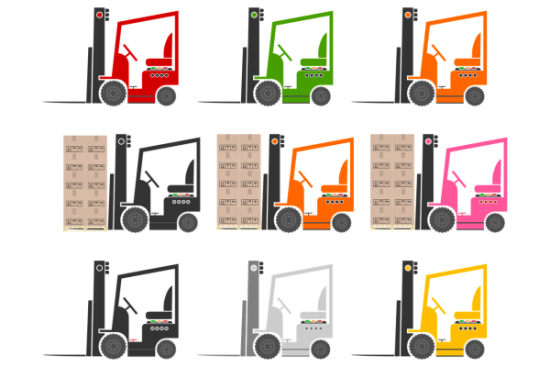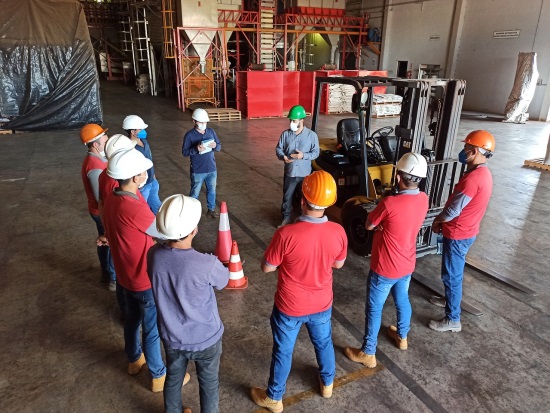Common forklift accidents and how they can be prevented
Forklift accidents are a common occurrence in warehouses and other industrial settings, where injuries can range from minor to fatal and often result in significant property damage. While many forklift accidents are unavoidable, there are steps that employers and workers can take to help prevent them.
This article will outline some of the most common forklift accidents, along with advice on how to avoid them. Employers should make sure that all workers are familiar with these dangers, and take measures to ensure that they are as safe as possible when operating a forklift.

Collision with a Wall or Other Object
This is one of the most common forklift accidents and occurs when the driver fails to account for how much space is needed to turn around a corner or navigate other tight spaces safely. To help prevent this, employers should ensure that all workers are properly trained on proper maneuvering techniques and that the warehouse is laid out to allow for plenty of space to move the forklift.
Additionally, it is important to ensure that all warning signs are visible and up-to-date. According to Prime Secure, if an area of the warehouse has changed or been adjusted, staff should be instructed to update any signage accordingly so that drivers know their limitations. Access control can also be used to designate areas where the forklift is not allowed and restrict access when needed.
Falling Off the Forklift
This type of accident often occurs due to a lack of safety equipment or failure to use it properly. For instance, many forklifts do not come with seatbelts as standard, so it is important to ensure that all staff are provided with and properly instructed on how to use them. Additionally, employers should ensure that the forklift has proper guardrails or other safety features that can help prevent workers from accidentally slipping off.
Furthermore, to prevent falls, every worker should be trained in how to properly get on and off the forklift, as well as how to adjust the seat and operate the lift correctly. Workers should also be instructed on the importance of keeping their hands and feet away from moving parts, such as forks or pallets.
Tipping Over
Although tipping over a forklift is not as common as other types of accidents, it can still be dangerous due to the potential for serious injuries. Providing forklift training, ensuring staff understands how the load affects the center of gravity, and taking measures to keep all loads balanced and stable can help reduce the risk of tipping.
Additionally, employers should provide the appropriate safety equipment and check that it is being used properly, such as a forklift seatbelt or roll-over protection system (ROPS) if available.
On the other hand, dropping objects from forklifts is a more common accident that occurs when a driver fails to properly secure an object on their forks or when they attempt to lift more than their forklift's weight capacity. It is usually caused by a lack of training or experience in how to properly secure loads.
To avoid this, employers should provide training and ensure that all workers understand the weight capacity of their forklift and how to properly secure any items they are lifting.
Collision with Other Vehicles and People
This is a common hazard when more than one forklift is operating in the same area. To prevent this type of accident, employers should ensure that all workers are trained on proper forklift operation and safe driving practices. Additionally, operators should be aware of the locations of other vehicles in their vicinity to help avoid collisions.
In addition, employers should consider implementing a traffic control system such as a “one-way” rule or traffic signals to help prevent collisions. If a warehouse has multiple floors, employers should also consider installing a barrier between each level to ensure that forklifts cannot travel between them and create a potential hazard.
On the other hand, employers should be aware of the potential for forklifts to collide with pedestrians. This can be avoided by providing staff with the appropriate safety equipment and training, such as high-visibility vests, and by creating designated walkways that are marked and separated from the driving areas.
Injuries Caused by Poor Maintenance
Forklifts should be regularly inspected and maintained to ensure that they are in good working order. Poor maintenance can lead to malfunctions, such as brakes failing or steering becoming uncontrollable, which can result in serious injuries. Employers should ensure that all staff is trained on how to identify potential issues with the forklift and when it is necessary to have it inspected and repaired.
For instance, regular inspections should be conducted to check for worn or damaged parts, such as brakes and tires. Or, if the forklift has been exposed to extreme temperatures, such as cold or heat, then it should be inspected to make sure it is still safe to use.
Additionally, employers should ensure that all workers are aware of the potential risks associated with using a forklift and how to properly report any issues they may encounter.
Improper Battery Charging
Finally, forklifts that are powered by batteries require regular charging to keep them running properly. Improperly charging a battery can lead to an explosion or fire, which can cause serious injury or even death. It is important for employers to provide training on how to safely charge the battery and to enforce the correct charging processes.
Additionally, employers should use a designated battery charger and provide safety gear such as protective glasses and gloves when charging batteries.
Additionally, employers should ensure that all workers are aware of the proper safety procedures to follow in case of a battery fire, such as evacuating the area and calling emergency services.

By following these steps, employers can help reduce the risk of forklift accidents and ensure that their staff is safe when operating these vehicles. Proper training and maintenance are essential for preventing forklift accidents and keeping everyone safe in the workplace. Additionally, employers should ensure that they are following all applicable safety regulations to ensure their place of business is as safe as possible.
This means that, by addressing common hazards, employers can help create a safer working environment for their staff and reduce the risk of accidents and injuries.